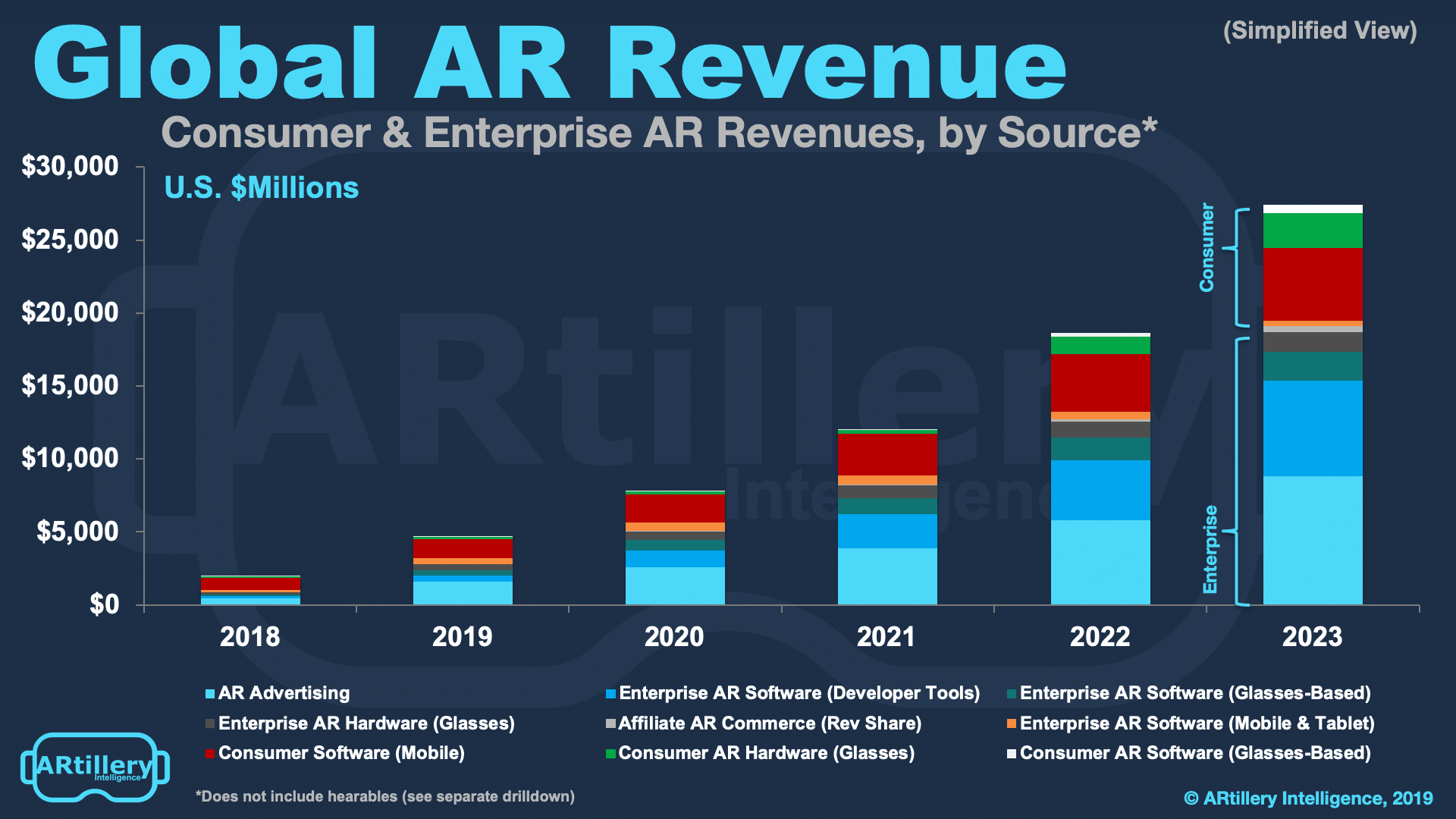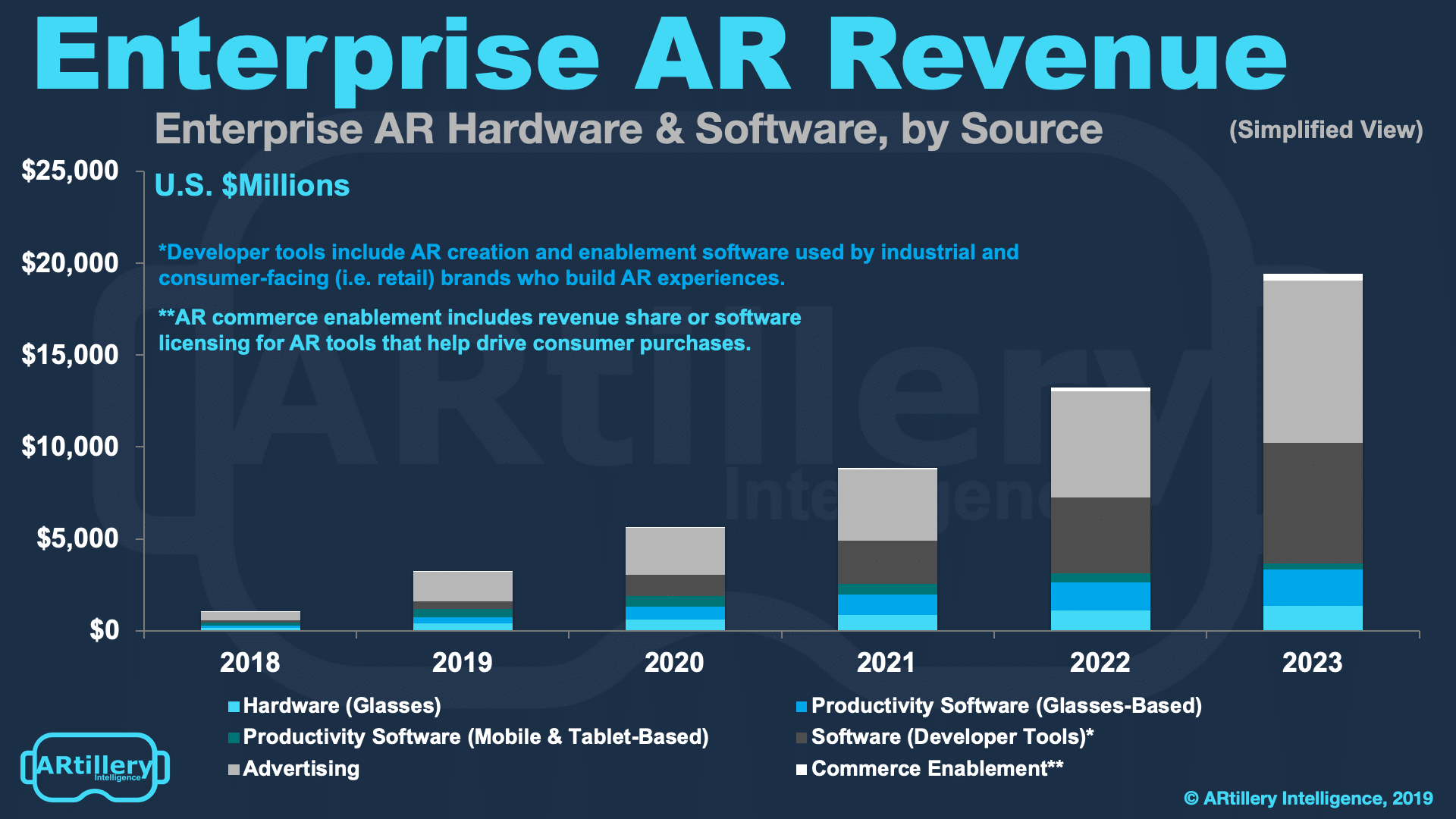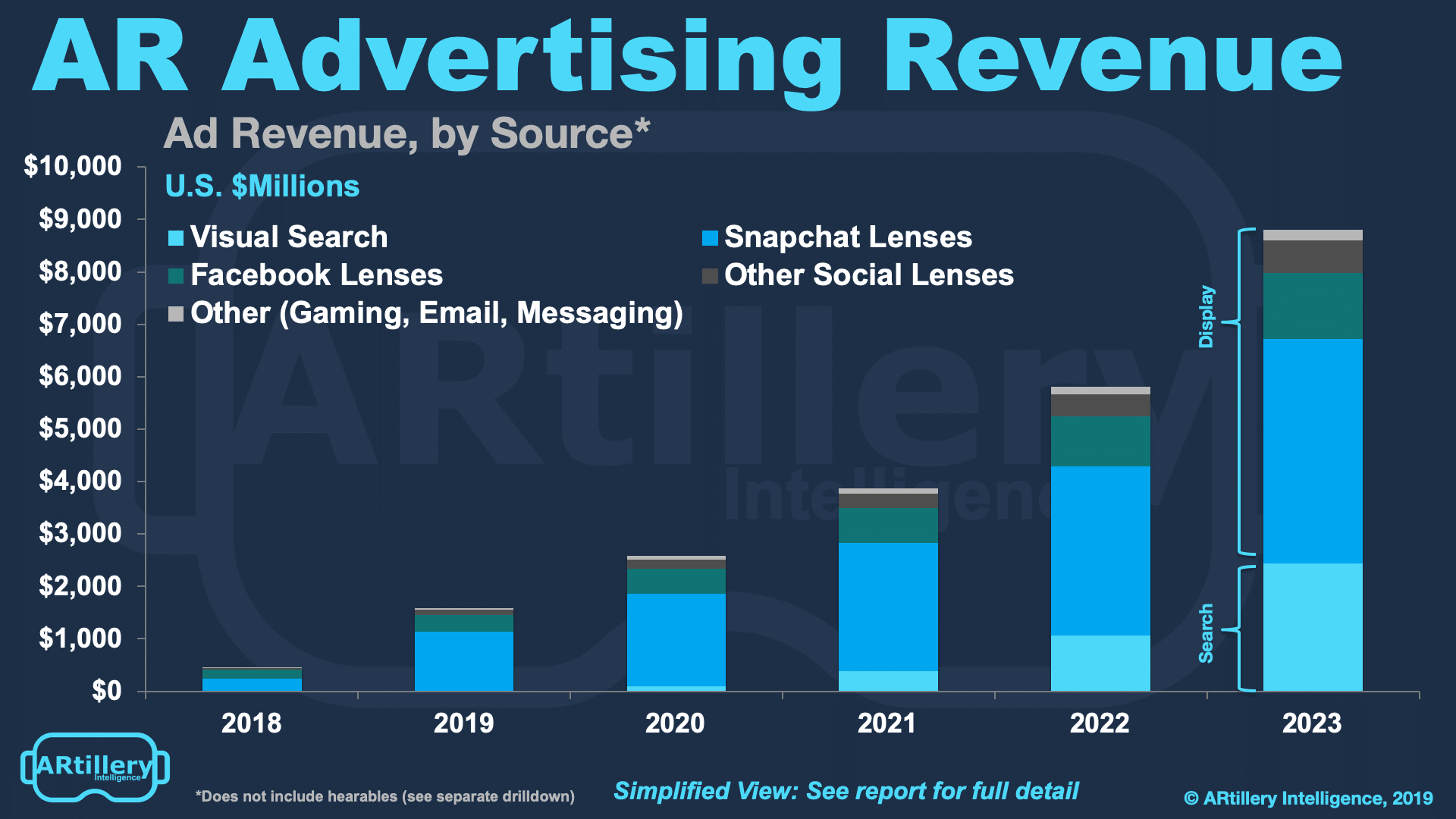
“Behind the Numbers” is AR Insider’s series that examines strategic takeaways from ARtillery Intelligence data. Each post drills down on one topic or chart. Subscribe for access to the full library and other knowledge-building resources.
AR continues to show early-stage characteristics, including volatile interest and investment. But how big is it, and how big will it get? AR Insider’s research arm ARtillery Intelligence has quantified the revenue position and outlook, resulting in the fourth and latest wave of its AR forecast.
At a high level, the firm projects AR revenues to grow from $1.96 billion last year to $27.4 billion in 2023. That includes lots of moving parts and sub-sectors including consumer, enterprise, hardware, software, advertising and AR commerce enablement (full list of inclusions here).

Drilling Down: Enterprise AR
Drilling down into one of those areas, how does enterprise AR look? ARtillery Intelligence projects it to grow from $1.002 billion in 2018 to $19.45 billion in 2023, an 81 percent compound annual growth rate. This is subdivided between several areas of enterprise AR spending.
This is anything that enterprises pay for, as opposed to consumer AR spending (broken down here). So it includes industrial productivity hardware & software, advertising, AR commerce enablement, and developer/creative tools like Unity, Adobe Aero and Amazon Sumerian.
In industrial contexts, growth will result from applicability across enterprise verticals, and clear ROI (e.g. manufacturing efficiencies). Adoption is currently dampened by typical organizational inertia, risk aversion and the dreaded “pilot purgatory” that’s emerged as a prevalent barrier.
ARtillery believes these factors will continue to stunt industrial AR growth but will eventually be overcome by the momentum currently building. A tipping point will be followed by accelerated adoption, similar to last decade’s enterprise smartphone adoption. But that will take a few years.
The starting point for industrial AR is hardware, where signals indicate slower than expected headset adoption. Software revenue will grow in share as it builds on that installed base. Meanwhile, trusted hardware like smartphone and tablets are prevalent AR vessels.

AR as a Service
Sizable opportunity also awaits in enterprise AR software subsegments such as developer platforms and creation tools. These will see healthy growth during this forecast period through Saas-like packaging/pricing. This is what ARtillery Intelligence calls AR as a Service (ARaaS).
Value propositions for these AR enablement tools, or “picks & shovels,” are aligned with early-stage enterprise demand. They’ll be key ingredients to boost AR creation, democratize advanced capability and accelerate time to market. It’s already being seen in the sub-sector’s leader, Unity.
Other key enterprise AR revenue categories include AR advertising and commerce. Though these activations eventually touch consumers,* they’re counted under enterprise AR because of who’s paying for them (advertisers, brands, retailers, etc.). This is a subset that ARtillery calls B2B2C.
Within this subdivision, AR advertising revenues are projected to grow from $453 million to $8.8 billion by 2023. This is largely fueled by the demand signals already exposed by Snapchat and Facebook. Brand advertisers are erstwhile attracted to AR’s performance and growing reach.
AR Commerce enablement will follow and correlate to advertising. This includes product visualization and transactional functions. Its need will grow with AR’s distribution across channels like apps, search, social, email, gaming and messaging (see our deeper dive here).

Cautiously Optimistic
At a high level, ARtillery Intelligence’s position on AR revenue growth is best characterized as cautiously optimistic. Growth and scale will come, but slower than many industry proponents have thought, due partly to the pace of adoption and other signals that ARtillery Intelligence tracks.
In fact, you may notice that AR revenue projections in outer years are lower than other figures you may have seen. They’re also lower than ARtillery’s past estimates, as it adjusts to market signals. This is common in market forecasting, as market watchers course-correct to market variables.
Stay tuned for more forecast tidbits and insights over the coming weeks. Meanwhile, find out more about the report methodology or access the entire thing here. There will be lots to unpack as the AR market unfolds and brings us a combination of expected outcomes and surprises.
*The transaction value of consumer goods bought through AR interfaces is tracked in this forecast but not counted towards “AR revenue.” More inclusions and exclusions are spelled out here.
For deeper XR data and intelligence, join ARtillery PRO and subscribe to the free AR Insider Weekly newsletter.
Disclosure: AR Insider has no financial stake in the companies mentioned in this post, nor received payment for its production. Disclosure and ethics policy can be seen here.
